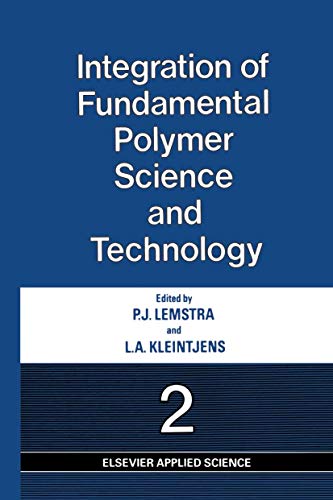
Inhaltsangabe
Polymer science has matured into a fully accepted branch of materials science. This means that it can be described as a ’chain of knowledge’ (Manfred Gordon), the beads of the chain representing all the topics that have to be studied in depth if the relationship between the structure of the molecules synthesized and the end-use properties of the material they constitute is to be understood. The term chain indicates the connectivity of the beads, i.e. the multidisciplinary approach required to achieve the aim, knowledge, here defined as quantitative understanding of the relationship mentioned above in all its parts. Quite a few conferences are being held at which the disciplinar beads themselves are discussed in detail, and new results within their framework are presented. In this respect, the TUPAC Microsymposia in Prague have made themselves indispensable, to mention one successful example. The bi annual TUPAC Symposia on Macromolecules, on the other hand, supply interdisciplinary meeting places, which have the advantage and the disadvantage of a large attendance. Smaller-size conferences of a similar nature can often be found on a national level. The organizers of the young, but already well-appreciated, Rolduc Meetings on the interplay between fundamental science and technology in the polymer field struck an interesting chord’ when they realized that focussing on the basic science behind technological problems would serve the purpose of concentration on insight along the chain of knowledge and avoid the surrender to too large a size for the meeting to really be a meeting.
Die Inhaltsangabe kann sich auf eine andere Ausgabe dieses Titels beziehen.
Reseña del editor
Polymer science has matured into a fully accepted branch of materials science. This means that it can be described as a 'chain of knowledge' (Manfred Gordon), the beads of the chain representing all the topics that have to be studied in depth if the relationship between the structure of the molecules synthesized and the end-use properties of the material they constitute is to be understood. The term chain indicates the connectivity of the beads, i.e. the multidisciplinary approach required to achieve the aim, knowledge, here defined as quantitative understanding of the relationship mentioned above in all its parts. Quite a few conferences are being held at which the disciplinar beads themselves are discussed in detail, and new results within their framework are presented. In this respect, the TUPAC Microsymposia in Prague have made themselves indispensable, to mention one successful example. The bi annual TUPAC Symposia on Macromolecules, on the other hand, supply interdisciplinary meeting places, which have the advantage and the disadvantage of a large attendance. Smaller-size conferences of a similar nature can often be found on a national level. The organizers of the young, but already well-appreciated, Rolduc Meetings on the interplay between fundamental science and technology in the polymer field struck an interesting chord' when they realized that focussing on the basic science behind technological problems would serve the purpose of concentration on insight along the chain of knowledge and avoid the surrender to too large a size for the meeting to really be a meeting.
„Über diesen Titel“ kann sich auf eine andere Ausgabe dieses Titels beziehen.
Weitere beliebte Ausgaben desselben Titels
Suchergebnisse für Integration of Fundamental Polymer Science and Technology&#x...
Integration of Fundamental Polymer Science and Technology2
Anbieter: Revaluation Books, Exeter, Vereinigtes Königreich
Paperback. Zustand: Brand New. 628 pages. 9.01x5.99x1.42 inches. In Stock. Artikel-Nr. x-9401071063
Neu kaufen
Anzahl: 2 verfügbar
Integration of Fundamental Polymer Science and Technology-2
Anbieter: preigu, Osnabrück, Deutschland
Taschenbuch. Zustand: Neu. Integration of Fundamental Polymer Science and Technology-2 | L. A. Kleintjens (u. a.) | Taschenbuch | 608 S. | Englisch | 2012 | Springer | EAN 9789401071062 | Verantwortliche Person für die EU: Springer Verlag GmbH, Tiergartenstr. 17, 69121 Heidelberg, juergen[dot]hartmann[at]springer[dot]com | Anbieter: preigu. Artikel-Nr. 105652103
Neu kaufen
Anzahl: 5 verfügbar
Integration of Fundamental Polymer Science and Technology-2
Anbieter: AHA-BUCH GmbH, Einbeck, Deutschland
Taschenbuch. Zustand: Neu. Druck auf Anfrage Neuware - Printed after ordering - Polymer science has matured into a fully accepted branch of materials science. This means that it can be described as a 'chain of knowledge' (Manfred Gordon), the beads of the chain representing all the topics that have to be studied in depth if the relationship between the structure of the molecules synthesized and the end-use properties of the material they constitute is to be understood. The term chain indicates the connectivity of the beads, i.e. the multidisciplinary approach required to achieve the aim, knowledge, here defined as quantitative understanding of the relationship mentioned above in all its parts. Quite a few conferences are being held at which the disciplinar beads themselves are discussed in detail, and new results within their framework are presented. In this respect, the TUPAC Microsymposia in Prague have made themselves indispensable, to mention one successful example. The bi annual TUPAC Symposia on Macromolecules, on the other hand, supply interdisciplinary meeting places, which have the advantage and the disadvantage of a large attendance. Smaller-size conferences of a similar nature can often be found on a national level. The organizers of the young, but already well-appreciated, Rolduc Meetings on the interplay between fundamental science and technology in the polymer field struck an interesting chord' when they realized that focussing on the basic science behind technological problems would serve the purpose of concentration on insight along the chain of knowledge and avoid the surrender to too large a size for the meeting to really be a meeting. Artikel-Nr. 9789401071062
Neu kaufen
Anzahl: 1 verfügbar

